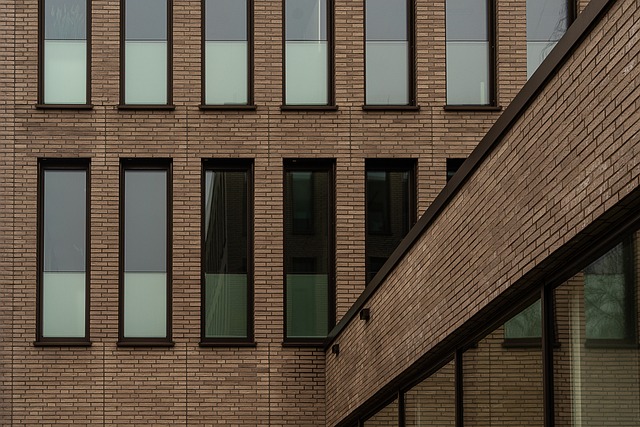Commercial property insurance, specifically tailored for business spaces, is a crucial risk management tool offering comprehensive financial protection against diverse potential losses. It covers physical structures, equipment, inventory, liability, and lost income from events like fires, theft, vandalism, natural disasters, and civil unrest. By assessing unique risks, including operational, environmental, and man-made perils, business owners can tailor policies to meet specific needs. Understanding coverage limits and exclusions is vital; prompt claim initiation and thorough documentation ensure a smooth recovery process, facilitating faster business continuity.
In today’s dynamic business landscape, safeguarding your commercial space is non-negotiable. Understanding Property and Casualty Insurance becomes pivotal as these policies offer critical protection against unforeseen events. This comprehensive guide delves into the intricacies of commercial property insurance, equipping you with knowledge to make informed decisions. From grasping essential coverage types to assessing risks and navigating claims, we explore every step necessary for securing your investment in commercial buildings.
Understanding Commercial Property Insurance: A Comprehensive Overview

Commercial property insurance, a crucial component in managing risks for businesses, provides financial protection against potential losses related to buildings and assets. It is a comprehensive coverage that goes beyond standard home or residential policies, catering specifically to the unique needs of commercial spaces. This type of insurance is designed to safeguard investments, ensuring business owners can recover and rebuild swiftly after unforeseen events.
The scope of property and casualty insurance for commercial buildings encompasses various perils, including fire, vandalism, theft, natural disasters, and civil unrest. It offers liability protection, covering legal expenses and damages arising from accidents or injuries occurring on the premises. By understanding the intricacies of this coverage, business owners can make informed decisions to safeguard their assets, ensuring peace of mind in an unpredictable world.
Types of Coverage: Property and Casualty Insurance Explained

Commercial property owners need comprehensive coverage to protect their valuable assets, and that’s where Property and Casualty Insurance comes into play. This type of insurance is designed to safeguard businesses against potential risks and losses associated with their physical locations. The term ‘Casualty’ refers to unexpected events causing harm or damage, while ‘Property’ covers the structural integrity and belongings within a commercial building.
When considering Property and Casualty Insurance for Commercial Buildings, several key elements are involved. These policies typically include coverage for the physical structure, business equipment, inventory, liability protection, and loss of income due to unforeseen circumstances such as fires, theft, vandalism, or natural disasters. Each component is tailored to meet the specific needs of different businesses, ensuring they are adequately protected in their respective industries.
Assessing Risk: Identifying Potential Threats to Your Commercial Space

When it comes to commercial spaces, assessing risk is a critical step in ensuring adequate property insurance coverage. Potential threats can arise from various sources, each carrying its own level of impact and likelihood. The first step in protecting your investment is to conduct a thorough evaluation of the building’s structure and location. This includes identifying hazards like natural disasters such as earthquakes, floods, or severe storms, which often require specific coverage under property and casualty insurance policies for commercial buildings.
Moreover, considering man-made risks is equally essential. These might include vandalism, theft, or civil unrest, which can be mitigated with the right insurance plans. Additionally, evaluating operational risks is key; businesses must account for potential disruptions caused by equipment failure, power outages, or even cyberattacks, as these incidents can significantly impact revenue and require specialized coverage. By thoroughly understanding these risks, business owners can tailor their insurance policies to provide comprehensive protection for their commercial spaces.
Choosing the Right Policy: Factors to Consider for Optimal Protection

When selecting a property and casualty insurance policy for your commercial building, several key factors come into play to ensure optimal protection. Firstly, understand the specific needs of your business and the nature of your operations; different industries have varying risks. For instance, a retail space may require coverage for inventory loss, while an office building might prioritize liability protection against visitor injuries.
Secondly, assess the value of your property, including structures, contents, and any valuable equipment or technology. Ensure that your policy limits align with these values to provide adequate financial protection in case of damage or loss. Additionally, consider locations and environmental risks; areas prone to natural disasters like floods or earthquakes may require specialized coverage. Regular reviews and adjustments to your policy are essential to keep up with changing business needs and potential hazards.
Common Exclusions and Limitations: What's Not Covered?

Property and casualty insurance for commercial buildings is designed to protect against significant financial losses, but it’s essential to understand what’s covered and what isn’t. Common exclusions and limitations vary by policy and provider but often include events like war, nuclear incidents, or environmental disasters, as these are considered high-risk and potentially uninsurable.
Additionally, certain types of damage may not be covered without specific endorsements. For instance, routine maintenance or repairs are usually excluded, and policies typically don’t compensate for business income loss unless it’s directly related to a covered property damage event. Understanding these exclusions is crucial when considering property insurance for commercial spaces to ensure adequate protection.
Claims Process: Navigating the Road to Recovery After a Loss

After experiencing a loss at your commercial property, navigating the claims process is crucial for a smooth road to recovery. The first step involves contacting your insurance provider as soon as possible to initiate the claim and ensure prompt attention. Property and casualty insurance for commercial buildings typically includes a detailed claims procedure designed to protect both the insured and insurer’s interests.
During this phase, policyholders should meticulously document all damages by taking photos and keeping records of repair estimates. The insurance company will then send an adjuster to assess the loss, after which a settlement offer is made based on the coverage limits and the scope of damage. Effective communication between the policyholder and insurer is vital to ensure the claims process moves efficiently, allowing for quicker restoration and business continuity.
